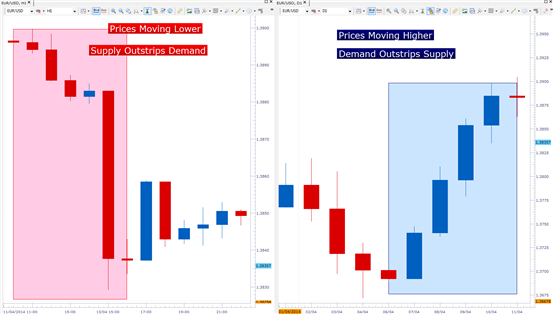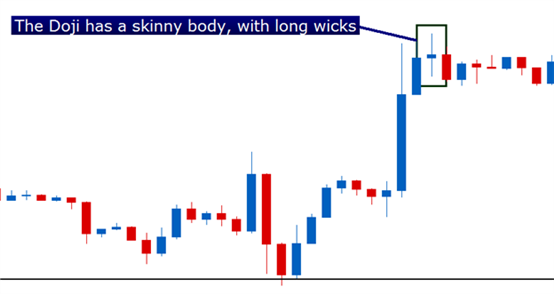Talking Points:
- Traders can use price action to look for swings in the marketplace.
- Indecision can highlight potential areas of swing on the chart.
- Swings can be attractive because of the potentially beneficial risk-reward opportunities.
Of all of the different ways that traders can approach speculation in markets, Swing Trading has to be one of the more interesting.
Scalping or day-trading is largely dependent on momentum. Longer-term trading is generally dependent on data flow or macro-economic events. But swing traders generally have a plethora of opportunities, whether markets are in long-term trends or not.
We discussed this style of trading with recommendations for time frames to utilize and entry protocols in the article, The Four Hour Trader. In this article, we’re going to take a closer look at the types of price action events that will often take place at these swings, giving the trader the opportunity to implement a strong risk-reward ratio on the entry of the trade.
The Benefit of Price Action as an Indicator
New traders will often ask ‘what drove that move in EURUSD?’ Or ‘Why did Sterling go down?’ And if you look hard enough, you can almost always find a reason. Most of the financial media makes a living on the explanation behind those reasons. But the fact-of-the-matter is that this hindsight type of analysis is really simple after-the-fact; but rarely relevant before-hand. And as traders, we need to be in the position before the ‘reasons’ take place, so this type of hindsight is relatively worthless.
Almost every price movement in market can be boiled down to once simple factor: Supply and Demand; that’s it.
If there are more buyers than sellers, then price will go up. And if there are more sellers than buyers, price will go down. This relationship is exactly why markets work. Prices reflect what the market is willing to pay.
Changes in Supply and Demand create price movements

Created with Marketscope/Trading Station II; prepared by James Stanley
This is why technical analysis can be so valuable: It can strip out the ‘whys’ and focuses on the ‘what.’
One of the downsides of technical analysis is that most indicators are lagging the market, so it just obscures traders from the current supply/demand impact on the market; and this is why price action can be so incredibly valuable.
Price action, or the study of analyzing price and price alone in a trader’s analysis is one of the most ‘pure’ ways of performing technical analysis because it does not include any indicators that are lagging the market. If you’d like to become more familiar with the study of price action, the article Four Simple Ways to Become a Better Price Action Trader can certainly help you get started. And for more advanced study, The Forex Trader’s Guide to Price Action can take that education a step further.
Using Price Action to Catch Swings
Because price action is giving traders a direct view of the supply and demand in a market at a given point in time, traders can potentially get an early indication that a ‘swing’ or ‘reversal’ in prices may be near.
When market display indecision, this is showing that supply and demand is roughly equal at that moment in time. This will often show as a series of candlestick formations such as the Doji , or Spinning top formation.
Indecision formations highlight potential turning points

Taken from The Most Important Price Action Formation is Indecision
But this indecision may take a while to play out before prices actually reverse in the other direction. In many cases, multiple spinning tops or dojis can show up before prices actually reverse. But the benefit of this prolonged period of indecision is that it highlights to traders that the supply or demand in that pair may be at a turning point.
In the article The Most Important Price Action Formation is Indecision, we look at a variety of different ‘indecision’ candlestick formations that can potentially clue a trader into an upcoming reversal period.
Perhaps most importantly with indecision and swing-trading formations, traders can look for strong risk-reward ratios in an effort to avoid the Top Trading Mistake of losing so much when wrong; and making so little when correct.
--- Written by James Stanley
James is available on Twitter @JStanleyFX
Are you looking to take your trading to the next level? The DailyFX 360° Course offers a full curriculum, along with private, weekly webinars in which we walk traders through dynamic market conditions using the education taught in the course.
You can get a demo account completely free of charge to test this, or any strategy without the risk of financial loss. You can generate a new demo account with FXCM by clicking HERE.




